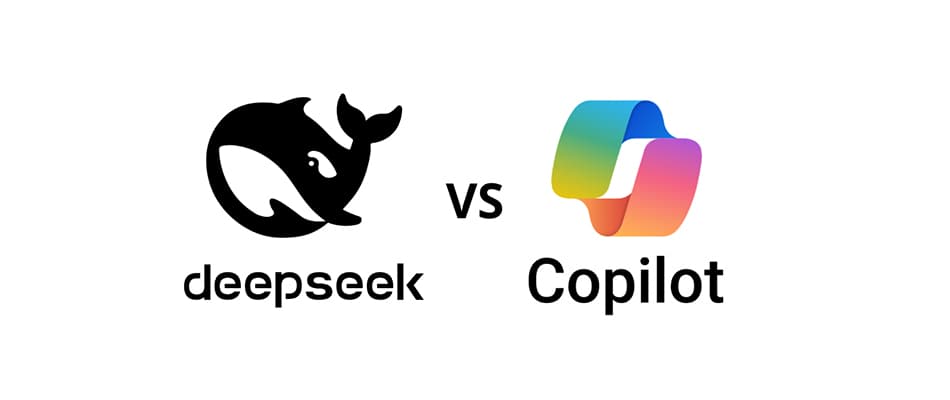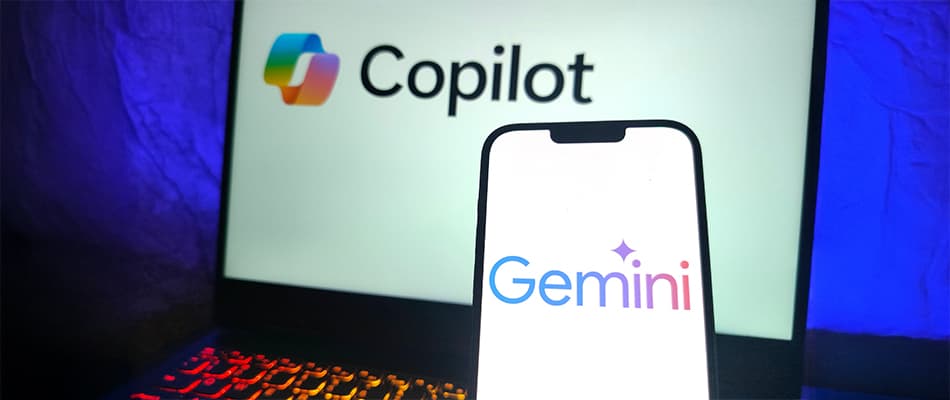Copilot vs DeepSeek – Which Tool Is Better?
Artificial intelligence is no longer a futuristic concept; it’s part of our everyday reality. From writing and coding to brainstorming and automating tasks, AI tools have become essential companions in both professional and personal life.
As more people rely on intelligent assistants to save time and boost productivity, selecting the right one has become increasingly crucial.
Among the leading contenders in 2026 are Microsoft Copilot and DeepSeek. While Copilot is deeply integrated into the Microsoft ecosystem, DeepSeek focuses on research, flexibility, and open-source innovation.
Each tool has its strengths, and your choice largely depends on how you plan to use AI in your daily workflow.
In this article, we’ll explore Copilot vs DeepSeek across usability, performance, and features to help you decide which AI assistant best fits your needs, whether you’re working on business tasks, creative writing, or research-driven projects.
Understanding the Basics
Before getting into comparisons, it’s worth understanding what makes these two AI tools so different. Both are powered by large language models, but their design philosophies cater to distinct audiences.
Copilot focuses on enhancing productivity through deep integration across Microsoft’s suite of tools. DeepSeek, meanwhile, is tailored for researchers and developers who value flexibility and transparency in AI interactions.
Before comparing features, let’s see what truly sets these two apart at their core.
- Copilot: Microsoft’s AI assistant integrated across Office apps, GitHub, and Windows, aimed at maximising productivity.
- DeepSeek: An open-source large language model developed in China, designed for research, coding, and creative problem-solving.
- Core Difference: Copilot focuses on enterprise integration; DeepSeek prioritises openness and performance flexibility.
Learn more about – How Industry Expert Sessions Shape Your AI Learning Journey.

Ease of Use and Accessibility
User experience is one of the biggest differentiators between Copilot and DeepSeek. Copilot stands out for its plug-and-play simplicity. Once you’re logged into Microsoft 365, it’s ready to assist you within Word, Excel, or Teams. DeepSeek, on the other hand, appeals to tech-savvy users comfortable experimenting with APIs or browser-based models.
While it might take an extra step to set up, it offers greater flexibility and customisation.
Let’s explore how they compare in everyday usability.
- Copilot: Embedded in Microsoft 365 and Windows for effortless use.
- DeepSeek: Accessible via browser or API with developer flexibility.
- Verdict: Copilot wins for simplicity; DeepSeek for technical adaptability.
Differences Between Microsoft Copilot and DeepSeek
To give you a clearer picture of how these tools differ in key areas, here’s a quick comparison of Copilot and DeepSeek side by side.
|
Feature |
Microsoft Copilot |
DeepSeek |
|
Core Focus |
Productivity, automation, writing, coding |
Research, code generation, creative writing |
|
Integration |
Microsoft 365, GitHub, Windows |
API-based, open ecosystem |
|
Model Type |
GPT-4-turbo based |
DeepSeek-V2 model (open-source) |
|
Offline Access |
Limited |
Possible (self-hosted) |
|
Language Support |
Multilingual (via Microsoft Cloud) |
Multilingual, growing with data |
|
Security |
Enterprise-grade Microsoft compliance |
Depends on self-hosted configuration |
|
Pricing |
Subscription-based (Microsoft 365, GitHub Copilot) |
Free or API-based pricing |

Performance and Output Quality
When it comes to quality, both tools perform impressively, but their strengths differ. Copilot excels at generating context-aware, structured content, summarising emails, analysing spreadsheets, or drafting reports.
DeepSeek, however, goes deeper with its reasoning and creativity, making it ideal for research or analytical writing. Its open nature means users can tweak how it responds or integrates into different systems.
Here’s how they perform when put to the test in real-world tasks.
- Copilot: Delivers concise, professional responses within context.
- DeepSeek: Excels in deep reasoning and exploratory writing.
- Verdict: Copilot wins for office productivity; DeepSeek leads for analytical depth.
Read more – Predictive Modelling with Classification & Clustering Techniques.
Use Cases – When to Choose Copilot
If your daily workflow revolves around Microsoft tools, Copilot is an obvious choice. It’s designed for professionals who need seamless assistance without constant switching between apps.
Whether you’re preparing slides, managing emails, or writing reports, Copilot speeds up every task. It’s also highly valuable for developers using GitHub Copilot, which intelligently predicts code snippets and improves workflow efficiency.
Here’s when Copilot becomes your go-to AI tool.
- Ideal for Microsoft 365 and Windows users.
- Perfect for automating emails, reports, and documents.
- Enhances developer productivity via GitHub Copilot.
- Offers enterprise-grade data security and compliance.
Use Cases – When to Choose DeepSeek
DeepSeek caters to professionals who want complete control over how they use AI. Because it’s open-source, users can fine-tune responses, adjust datasets, or even run the model locally for added security.
It’s particularly powerful for research teams, startups, or data scientists who need freedom to customise and explore advanced use cases that go beyond a single corporate ecosystem.
DeepSeek stands out in these use cases.
- Great for research, development, and innovation.
- Suitable for multilingual and creative writing tasks.
- Offers customisation through API and open-source access.
- Cost-effective for large-scale or experimental projects.
Get insights on – Role of AWS in AI/ML.

Can You Use Both Together?
Interestingly, you don’t have to choose between Copilot and DeepSeek; you can benefit from both. Imagine using Copilot to handle all your business documentation, project updates, and emails while using DeepSeek for deep-dive research or technical content creation. This blended approach gives you the reliability of Microsoft’s AI with the adaptability of DeepSeek’s open model.
Combining both tools can give you the best of both worlds.
- Use Copilot for office productivity and structured writing.
- Use DeepSeek for creative exploration and technical reasoning.
- Ideal hybrid approach for diverse professional use cases.
Pro Tips and Best Practices
Maximising the value of AI tools comes down to how you use them. Setting clear objectives and experimenting with prompts can dramatically improve output quality. Both Copilot and DeepSeek respond better when given context, a reminder that effective AI use is as much about the user as the tool itself.
Here are a few pro tips to enhance your AI experience.
- Define your specific goals before using either tool.
- Keep prompts concise yet detailed.
- Test both tools for different workflows.
- Combine Copilot’s speed with DeepSeek’s reasoning.

Conclusion
Both Copilot and DeepSeek are exceptional AI tools, but each serves a different kind of user. Copilot is perfect for professionals and teams who want AI to make their daily tasks more efficient, integrated, and secure.
DeepSeek, on the other hand, is best for researchers, developers, and innovators who prefer flexibility, openness, and deeper control over how AI behaves.
If you’re looking to advance your understanding of how these tools work, Digital Regenesys offers an Artificial Intelligence Certificate Course that helps learners gain hands-on knowledge of cutting-edge AI applications.
From Copilot to DeepSeek and beyond, this course prepares you to use AI confidently and creatively in your career.
Visit Digital Regenesys to discover how AI tools like Copilot and DeepSeek can help accelerate your career in the age of intelligent automation.
FAQs
What is DeepSeek used for?
DeepSeek is designed for research, programming, and open-ended creative tasks. It’s an open-source model that allows developers and professionals to explore advanced AI reasoning and natural language understanding.
Is Copilot better for coding than DeepSeek?
Copilot, particularly GitHub Copilot, is excellent for coding assistance within IDEs. DeepSeek is more suited for experimental or custom development scenarios.
Which is more affordable – Copilot or DeepSeek?
DeepSeek offers free or low-cost API access, while Copilot typically requires a Microsoft or GitHub subscription. The better choice depends on how frequently you use AI.
Can DeepSeek integrate with Microsoft tools?
Currently, DeepSeek does not integrate directly into Microsoft 365. However, developers can connect it via API for custom workflows.
Do both tools protect user data?
Yes, but differently. Copilot adheres to Microsoft’s enterprise-grade security standards, whereas DeepSeek’s privacy depends on it deployment method (cloud or self-hosted).
How can I learn to use AI tools effectively?
You can develop a strong foundation through structured learning. The Digital Regenesys Artificial Intelligence Certificate Course offers a comprehensive understanding of AI applications, tools, and their real-world implementations.










